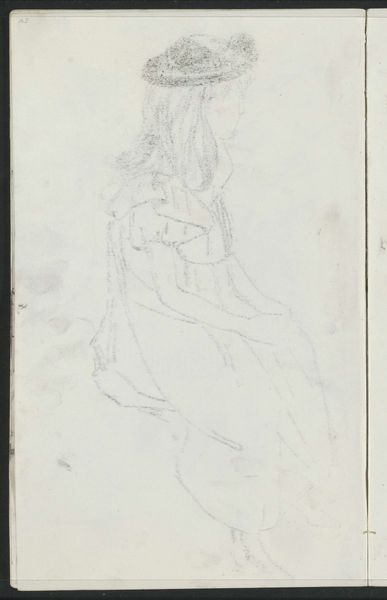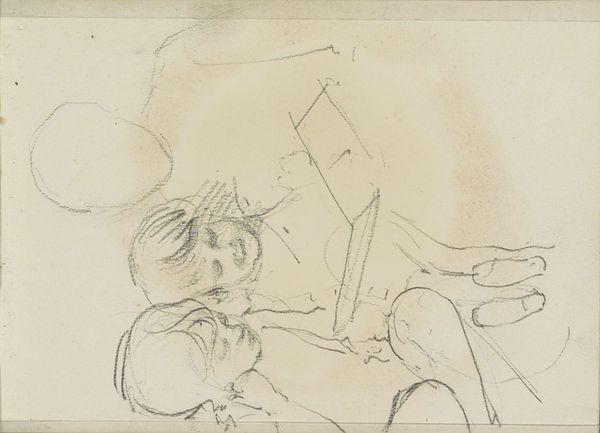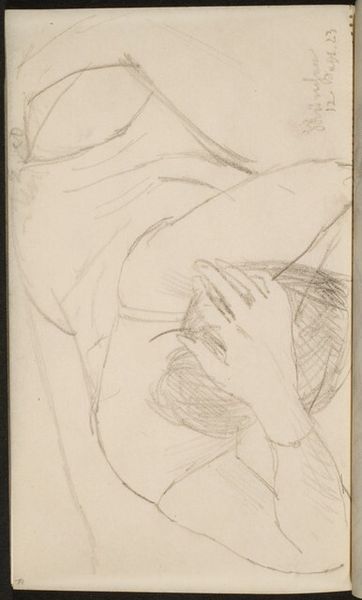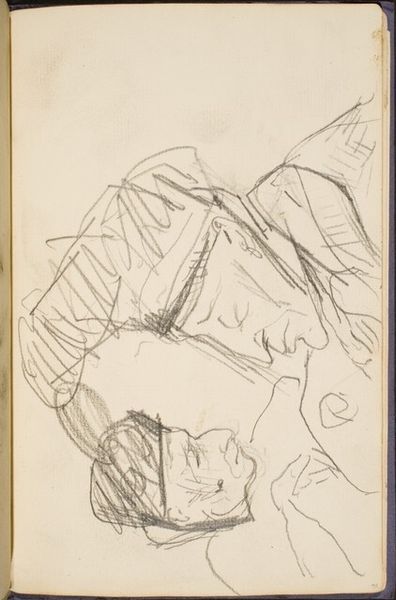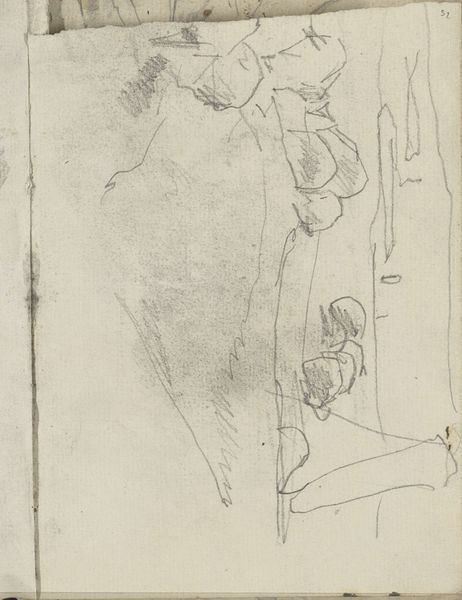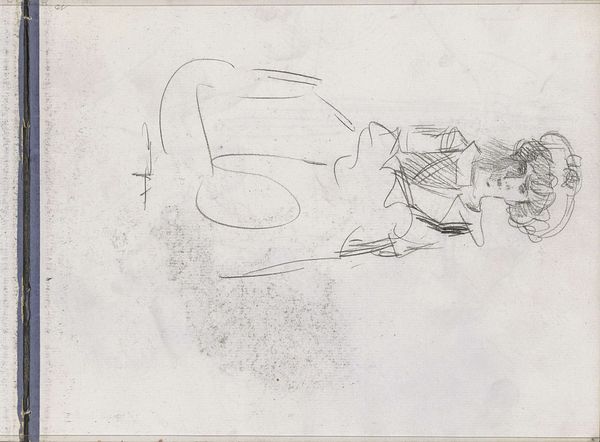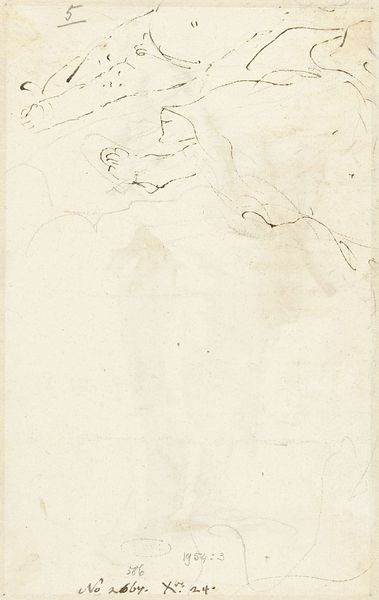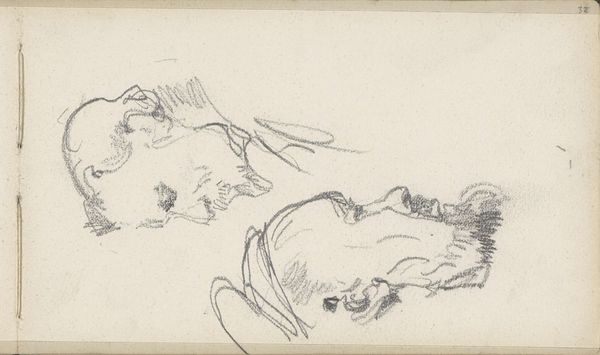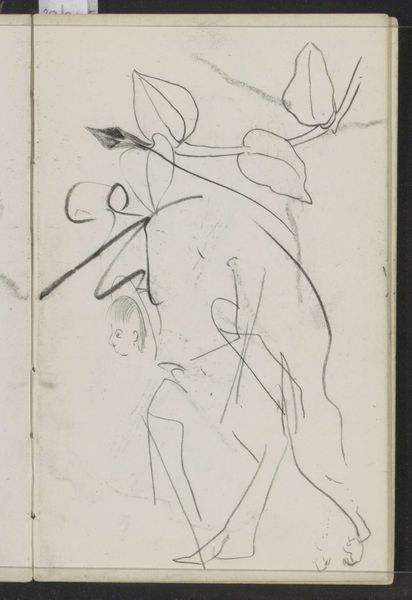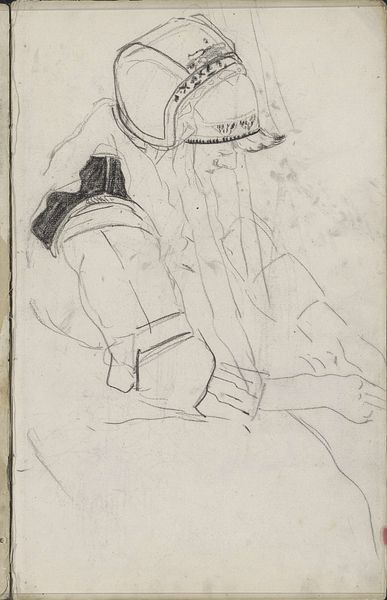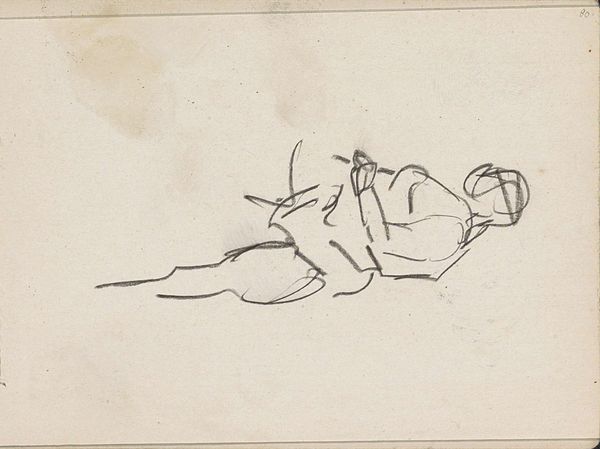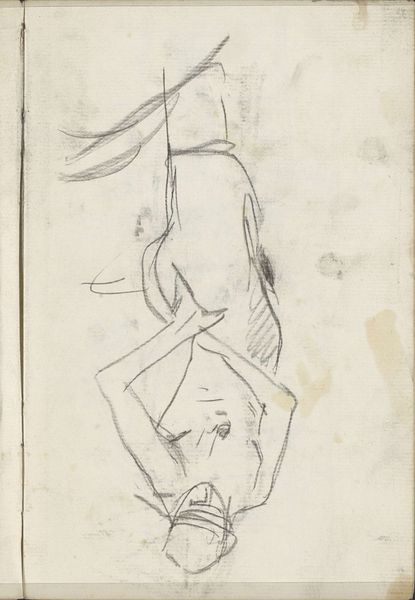
drawing, pencil
#
portrait
#
drawing
#
neoclassicism
#
figuration
#
pencil
#
portrait drawing
Copyright: Public Domain: Artvee
Editor: So here we have George Romney's "Figure Studies," dating back to the 1780s. It's a pencil drawing featuring two sketches of figures. There's something so raw and immediate about the lines; they feel like captured thoughts. How do you interpret this work? Curator: Well, I see this drawing in the context of the artistic institutions and ideals of Romney's time. The late 18th century witnessed the rise of academies and a growing emphasis on draftsmanship as fundamental to artistic skill. Think about it: drawings like this weren't necessarily intended as finished artworks for public display. Instead, they were vital tools for artists to hone their skills, explore different poses, and refine their understanding of anatomy. To me, this drawing is very much a product of the late Enlightenment emphasis on reason and observation, translated into artistic training. Do you get a sense of this when you look at it? Editor: Definitely. I was struck by the looseness of the lines, but I see what you mean about this being tied to practice. It's less about a polished final product and more about working through ideas. But beyond that, do you see a broader cultural influence shaping Romney's choices here? Curator: Absolutely. We should also remember the context of portraiture in 18th century Britain. The demand for portraits from the gentry fueled artists' careers, including Romney's, so preparatory sketches of poses were a key to streamlining production in a busy studio, and cultivating a suitable public image. The way Romney renders these figures also references neoclassicism. Artists looked to antiquity for inspiration, and that clearly affected Romney's figuration. The museum as a public entity also contributed to art styles and accessibility in that time. It changed who got to create and appreciate art. Editor: That's fascinating. Seeing it as both skill-building and related to neoclassicism through its relationship to these broader social and political influences around art making and art display shifts my perspective. Curator: Right. These ‘quick’ drawings reflect evolving institutions for making, and marketing, art. The raw marks, in this light, evidence Romney’s visual and economic positioning.
Comments
No comments
Be the first to comment and join the conversation on the ultimate creative platform.
